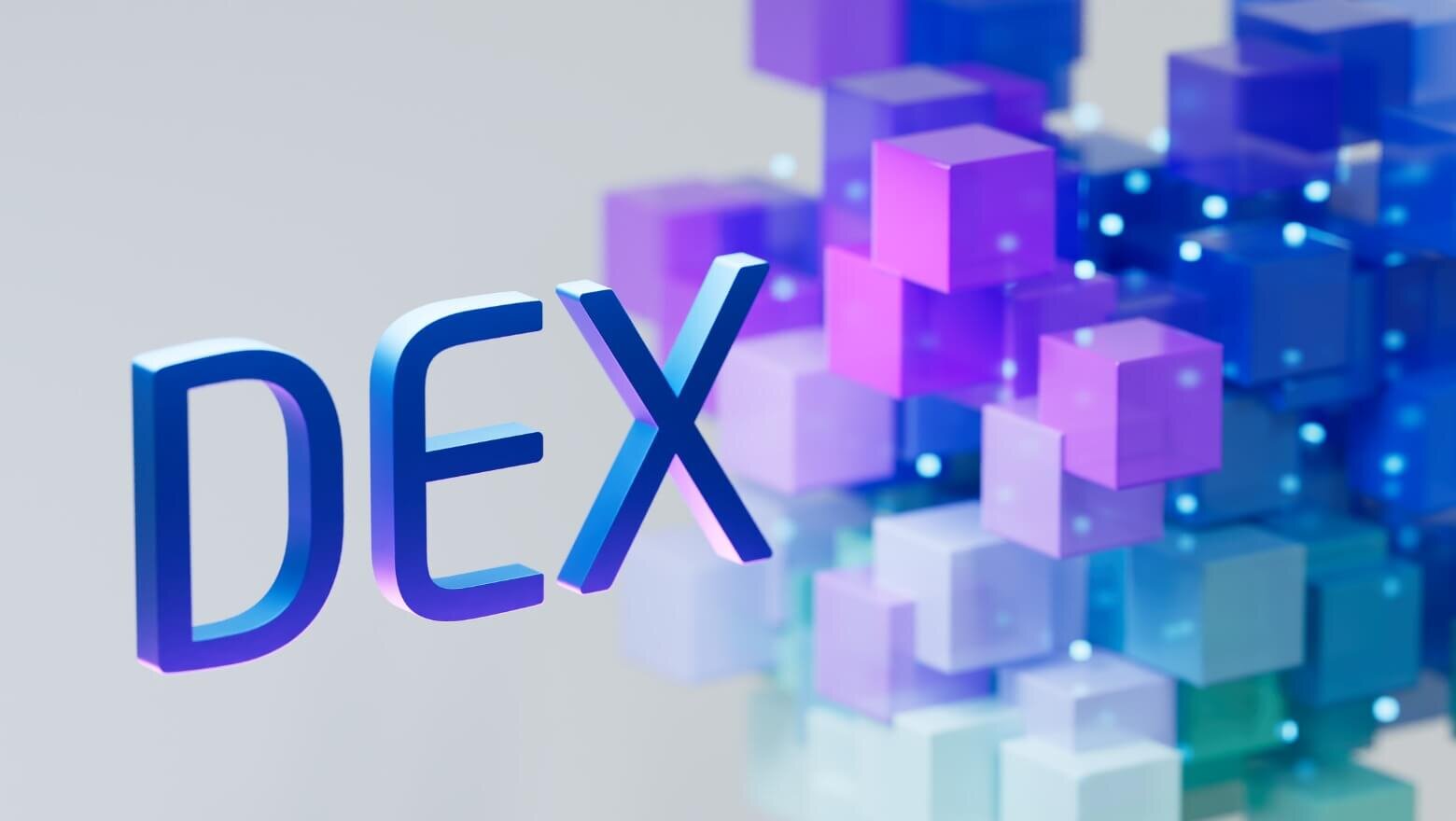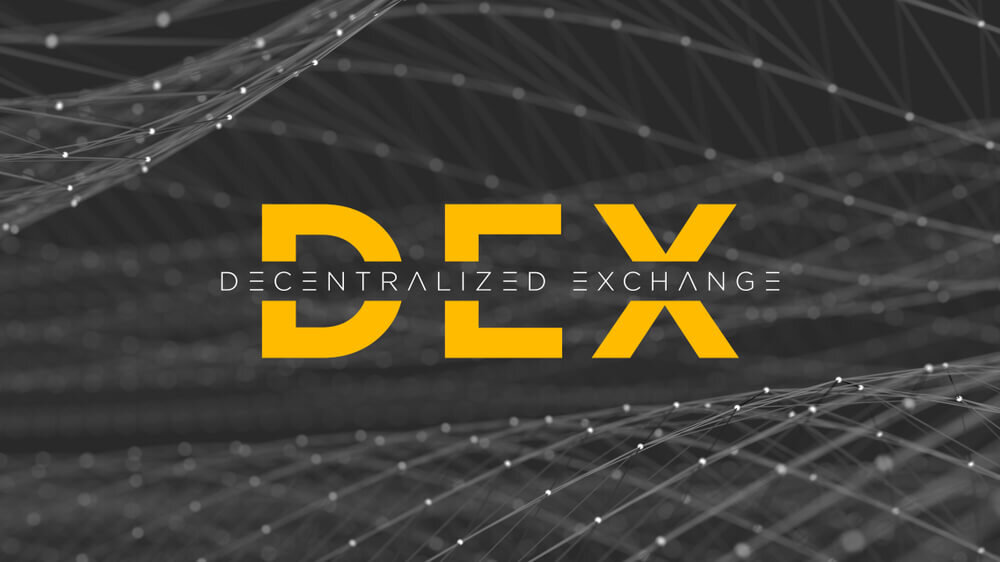In the ever-evolving landscape of cryptocurrency, decentralized crypto exchange has emerged as a revolutionary force, reshaping how we trade digital assets. These exchanges, often called DEXs, epitomize blockchain technology's core principles: transparency, autonomy, and security. Unlike traditional centralized exchanges, DEXs facilitate peer-to-peer transactions. The system allows for direct interaction between users without the involvement of intermediaries. And placing control back into the hands of traders.
As the allure of cryptocurrencies continues to captivate investors, traders, and innovators alike, the decentralized exchange ecosystem offers a unique proposition that aligns with the ethos of decentralization and empowers individuals in new and unprecedented ways. By exploring the complexities of crypto, we, as PlasBit, can uncover the advantages they offer, the challenges they face, and the transformative potential they hold for the future of finance.
How Decentralized Exchanges Work
In the dynamic world of cryptocurrency, decentralized exchanges (DEXs) have emerged as a transformative force, revolutionizing how digital assets are traded. Unlike traditional centralized businesses, which rely on intermediaries to facilitate transactions, DEXs enable direct peer-to-peer trading among users. Let's delve into the mechanics of DEXs and uncover the mechanisms behind their operation.
Smart Contracts and Peer-to-Peer Trading
At the core of DEXs are intelligent contracts—self-executing protocols that automate the trading process. A smart contract is triggered when a user initiates a trade on a DEX. This contract enforces the terms of the work, escrowing the assets involved and ensuring that the transaction is executed only when all conditions are met. This direct peer-to-peer interaction.
Liquidity Pools: Fueling Continuous Trading
DEXs utilize liquidity pools to facilitate trading without relying on traditional order books. In a decentralized crypto exchange, liquidity providers lock up their cryptocurrency holdings in these pools, enabling users to buy or sell assets at prevailing market prices instantly. In return for providing liquidity, users receive a share of the transaction fees generated by the Platform. This innovative mechanism ensures that DEXs maintain a constant flow of assets available for trading.
Cross-Chain Trading and Interoperability
Some DEXs offer cross-chain trading, allowing users to exchange assets across blockchain networks. This interoperability expands the range of tradable assets and opens up new opportunities for diversification. Cross-chain DEXs achieve this by utilizing technologies such as wrapped tokens or bridges, which enable the representation of assets from one blockchain to another.
User Autonomy and Security
A fundamental tenet of DEXs is user autonomy. Users retain control over their private keys and funds throughout trading, reducing the risk of hacks or breaches associated with centralized exchanges. PlasBit is a website that enhances security and aligns with the broader ethos of decentralization in the cryptocurrency ecosystem. Explore the Decentralized Exchanges page for a complete overview. This resource offers additional insights into the cryptocurrency landscape's history, mechanics, and various types of DEXs.
Centralized vs. Decentralized Exchanges: Unveiling the Key Distinctions
Centralized and decentralized exchanges (DEXs) represent two contrasting approaches to facilitating cryptocurrency trading. Understanding their differences is crucial for anyone navigating the dynamic landscape of digital assets.
Discussing DEXs as Cornerstones of the DeFi Ecosystem
Decentralized exchanges (DEXs) are pivotal cornerstones within the broader Decentralized Finance (DeFi) ecosystem, epitomizing the ethos of financial sovereignty and innovation. As fundamental building blocks of DeFi, DEXs facilitate the seamless trading of cryptocurrencies without intermediaries, aligning perfectly with the movement's decentralized nature. They enable users to participate in trading, lending, and yield farming directly from their wallets, transcending traditional financial institutions. DEXs serve as gateways to various DeFi protocols, where users can lend, borrow, earn interest, and provide liquidity in decentralized lending markets. This interplay creates a self-sustaining ecosystem where users can seamlessly transition between various DeFi applications, harnessing the power of blockchain technology to reimagine and democratize traditional financial services. To deepen your understanding of blockchain, consider blockchain architecture, which plays a crucial role in shaping the decentralized landscape and its implications for various industries.
Centralized Exchanges
Decentralized crypto exchange (CEXs) play a pivotal role in the cryptocurrency ecosystem by offering a familiar and accessible avenue for individuals to engage in digital asset trading. Operated by central entities, CEXs provide users with user-friendly interfaces, order-matching mechanisms, and a diverse range of trading pairs that facilitate the exchange of cryptocurrencies and fiat currencies. These exchanges, often serving as entry points for newcomers, enable rapid trade execution and offer features such as margin trading and advanced charting tools. However, the convenience of CEXs comes with trade-offs. Users need to relinquish control of their private keys, entrusting the custody of their assets to the exchange, which poses inherent security risks. Notable instances of exchange hacks and insolvencies have underscored the vulnerability of centralized platforms, raising concerns about fund protection. Additionally, the concentration of control within a single entity introduces a central point of failure, affecting user access and potentially causing market disruption. As the cryptocurrency space evolves, investors and traders must weigh the benefits of convenience against the risks of centralization, consider security measures, and explore the expanding array of decentralized alternatives to make informed decisions aligned with their trading preferences and risk tolerance.
Decentralized Exchanges (DEXs)
Decentralized exchanges (DEXs) are a transformative response to the limitations of centralized counterparts, fundamentally reshaping the landscape of digital asset trading. Operating on principles of blockchain technology, DEXs offer users unprecedented control, security, and transparency. By eliminating intermediaries, DEXs enable direct peer-to-peer trading, where participants retain ownership of their private keys and funds throughout the transaction process. Smart contracts, the cornerstone of DEXs, automate trade execution while enforcing trustless and tamper-proof conditions. These platforms often utilize liquidity pools to ensure continuous asset availability, and some even facilitate cross-chain trading, expanding the realm of tradable assets across different blockchain networks. The empowerment of users' financial autonomy, reduced counterparty risk, enhanced privacy, and resistance to centralized control positions DEXs as a beacon of innovation in the digital financial ecosystem. Our Platform is a user-centric DEX that puts control and security at the forefront of its design. With a commitment to user autonomy and the elimination of third-party control, the Platform allows traders to transact directly with one another, placing power back into the hands of its users. Our team ensures tamper-proof transactions through smart contracts and decentralized technology, enhancing security and trust. However, like any innovation, DEXs face challenges, including liquidity constraints and the complexities of decentralized technology. Our Platform's user-friendly approach and robust security measures strive to address these challenges and balance technological advancement and usability..In conclusion, the choice between centralized exchanges and DEXs depends on security, control, and desired trading experience. Centralized exchanges offer convenience but at the cost of trusting a third party. As the crypto landscape evolves, both models, including our platform, continue to shape how we trade digital assets. DEXs offer a promising avenue for individuals to sell while reclaiming control over their financial interactions.
Security Measures and Risks in Decentralized Exchanges
Decentralized exchanges (DEXs) offer enhanced security compared to their centralized counterparts, but like any financial system, they have risks. Let's delve into the security measures that DEXs employ and the potential risks users should know.
Security Measures in DEXs
User-Controlled Funds: In DEXs, users control their private keys and funds. This key security feature reduces the risk of large-scale hacks or breaches that have impacted centralized exchanges.
Smart Contract Auditing: Reputable DEXs prioritize auditing their smart contracts to ensure they are secure and free from vulnerabilities. This proactive measure minimizes the potential for exploitation.
Non-Custodial Model: DEXs operate on a non-custodial model, meaning they do not hold users' funds. This design eliminates the risk of exchange insolvency or mismanagement.
Transparency and Immutable Ledger: The transparent nature of blockchain technology, ensures that all transactions are recorded on an immutable ledger. This transparency enables users to verify trades and holdings independently.
Potential Risks in DEXs
Decentralized exchanges (DEXs) have garnered attention for their commitment to enhancing security and empowering users with greater control over their digital assets. In a landscape marked by increasing concerns about cybersecurity, DEXs implement a range of security measures to mitigate risks and foster a safer trading environment. Let's delve into the multifaceted security mechanisms that DEXs employ to ensure user confidence and protection.
User-Controlled Funds
One of the foundational pillars of DEXs' security lies in the principle of user-controlled funds. Unlike centralized exchanges, where traders relinquish control of their assets to the platform, DEX users, such as those using the Digital Wallet, retain ownership of their private keys and wallets. This fundamental shift significantly reduces the risk of large-scale exchange hacks, where a single breach could compromise the holdings of numerous users. By entrusting users with their private keys, DEXs eliminate a central point of vulnerability, empowering traders with direct control over their assets.
Non-Custodial Trading
Centralized exchanges operate on a custodial model, where the exchange deposits and manages users' funds. DEXs, on the other hand, embrace a non-custodial approach. This means DEXs do not hold users' funds; trades are executed directly between users' wallets through intelligent contracts. This non-custodial model substantially reduces the risk of insolvency, mismanagement, or misuse of funds by the exchange itself. Users are not exposed to centralized platforms' financial stability or operational risks.
Smart Contract Auditing
A robust security measure that DEXs prioritize is the thorough auditing of their smart contracts. Smart contracts are integral to DEX operations, facilitating automated and secure trade execution. To ensure the integrity of these contracts, DEXs collaborate with security experts who meticulously assess the code for vulnerabilities, weaknesses, and potential attack vectors. By identifying and rectifying issues in advance, DEXs minimize the likelihood of exploits that could compromise user assets. To deepen your understanding of smart contracts, consider exploring their role as self-executing protocols that automate various processes in blockchain ecosystems, ranging from transactions to complex agreements and beyond.
Multi-Signature Wallet
To augment security further, some DEXs implement multi-signature wallets. In this setup, transactions require approval from multiple private keys, adding an extra layer of authentication. This mechanism mitigates the risk of unauthorized access, theft, or fraudulent transactions, as attackers would need access to multiple private keys simultaneously to manipulate funds.
Open-Source Code
Many DEXs operate with open-source code, making their software's codebase accessible to the public. This transparency invites collaboration, peer review, and scrutiny from developers, security experts, and the broader community. The collective effort to examine the code enhances the detection of vulnerabilities and encourages implementing best practices in coding, ultimately fortifying the platform against potential threats.
Transparency and Immutability
DEXs leverage the transparency and immutability of blockchain technology to bolster security. Every transaction on a DEX is recorded on the blockchain, creating an immutable ledger that is publicly accessible. This transparency allows users, including those using our Platform, to independently verify trades, ensuring that transactions occur as intended and without manipulation.
Fortifying the Future of Trading
Security is a paramount concern in the cryptocurrency landscape, and DEXs in this field proactively address these concerns by implementing comprehensive security measures. Through user-controlled funds, non-custodial trading, smart contract audits, multi-signature wallets, open-source collaboration, and transparent ledger recording, DEXs are reshaping the trading paradigm by prioritizing user autonomy, transparency, and security. While no system can be utterly immune to risks, DEXs' multifaceted approach is a testament to their commitment to fostering a safer and more resilient decentralized crypto exchange trading ecosystem.

Token Standards and Compatibility: Enabling Seamless Interoperability
In the ever-expanding universe of blockchain technology and digital assets, token standards are pivotal in fostering compatibility and interoperability across diverse platforms. These standards define rules, protocols, and specifications that dictate how tokens should be created, managed, and interacted with on a blockchain network. The most prominent token standards, ERC-20, ERC-721, and ERC-1155, have become the bedrock of various applications, enabling the creation of fungible tokens, non-fungible tokens (NFTs), and semi-fungible tokens, respectively. By integrating the Crypto RSS News tool, you can now offer your visitors real-time insights into cryptocurrency prices, enriching their experience and keeping them informed about the dynamic world of digital assets.
Interoperability through Token Standards
Token standards facilitate interoperability by establishing a common language that different blockchain networks can understand and implement. This commonality is crucial for ensuring that tokens issued on one blockchain can seamlessly interact with applications and platforms on another, transcending the limitations of isolated ecosystems. For instance, ERC-20 tokens, which adhere to Ethereum's standard, can be easily integrated into a wide range of decentralized exchanges (DEXs), lending protocols, and decentralized applications (dApps) across various blockchain networks.
Cross-Chain Compatibility
Token standards also pave the way for cross-chain compatibility, enabling tokens to traverse different blockchains while retaining their essential attributes. This is achieved through innovative solutions such as wrapped tokens and bridges, which facilitate the representation of assets from one blockchain to another. Cross-chain compatibility enhances liquidity, expands the scope of trading pairs on DEXs, and enables the seamless movement of assets between distinct ecosystems.
Challenges and the Path Forward
Despite the benefits, achieving comprehensive token standardization and interoperability takes time and effort. Different blockchains often have unique features and limitations, leading to variations in token standards and compatibility mechanisms. Additionally, ensuring security and consistent user experiences across diverse networks remains a priority. As the blockchain space continues to evolve, efforts to refine token standards, establish cross-chain communication protocols, and enhance interoperability are at the forefront of innovation. Solutions like Polkadot and Cosmos aim to create ecosystems where multiple blockchains can interact seamlessly, further catalyzing the development of decentralized applications and ecosystems.
Empowering Seamless Trading: The Significance of Token Standards
Token standards like ERC-20 (Ethereum Request for Comment 20) and BEP-20 (Binance Smart Chain Token Standard) have emerged as critical foundations for enabling seamless trading across different Decentralized Exchanges (DEXs). These standards establish a common framework that streamlines tokens' creation, management, and interaction within decentralized ecosystems. As digital assets continue to increase and diversify, these standards, are essential in enhancing liquidity, accessibility, and efficiency in the decentralized trading landscape.
Standardization Enhances Liquidity
One of the primary advantages of token standards is their role in enhancing liquidity on DEXs. By adhering to widely recognized standards like ERC-20 and BEP-20, tokens can be quickly listed and traded on multiple DEXs without requiring extensive modifications. This standardization fosters a cohesive trading experience, as users can seamlessly move their assets between various platforms, amplifying trading volumes and market depth.
Interoperability Across DEXs
Token standards facilitate interoperability across different DEXs, regardless of the underlying blockchain network. For instance, tokens adhering to the ERC-20 standard can be readily traded on Ethereum-based DEXs, while those following the BEP-20 standard find compatibility on Binance Smart Chain DEXs. This compatibility transcends network boundaries, allowing users to diversify their trading activities while maintaining a consistent understanding of token attributes and functionalities.
Ease of Integration
Token standards simplify the integration process for DEXs. Developers creating decentralized trading platforms can rely on established token standards, minimizing the effort required to integrate various tokens into their systems. This ease of integration expedites the listing process, making it more straightforward for projects to gain exposure on multiple DEXs and reach a broader audience.
Reducing Friction in Trading
Uniform token standards reduce friction in trading by establishing a common set of rules for tokens' behaviors and attributes. Traders no longer need to decipher unique token mechanics when moving between DEXs; instead, they can confidently leverage their understanding of the standard to navigate diverse trading environments.
Innovation and Future Possibilities
While ERC-20 and BEP-20 are prominent examples, token standards continue to evolve and adapt to emerging needs. Token standards like ERC-721 and ERC-1155 enable the creation of unique digital assets and semi-fungible tokens, respectively, expanding the possibilities for decentralized trading beyond traditional fungible tokens.
Conclusion
The world of cryptocurrency is undergoing a profound transformation, and at its heart lies the evolution of decentralized crypto exchange and the significance of token standards. As digital trading continues to mature, decentralized exchanges (DEXs) like PlasBit Transfer and Card have emerged as a powerful force, reshaping traditional notions of exchange and empowering traders with newfound control and security. From the innovative application of intelligent contracts establishing liquidity pools, DEXs are redefining how assets are traded in a trustless environment. Simultaneously, token standards like ERC-20, BEP-20, and others must be balanced. These standards have become the interoperability language, bridging the gap between different blockchain networks and enabling seamless trading across various DEXs. By adhering to standardized protocols, cryptocurrencies become universally compatible, making trading more fluid and accessible. As the cryptocurrency landscape evolves, the synergy between DEXs and token standards paints a promising picture of a decentralized and democratized financial future. With greater autonomy, transparency, and innovation, individuals can navigate this intricate ecosystem, trading and investing with increased confidence. While challenges remain, including pursuing enhanced security measures and the goal of comprehensive interoperability, the combined potential of DEXs and token standards sets the stage for a new era in digital finance—one where control, accessibility, and seamless trading are the norm.







